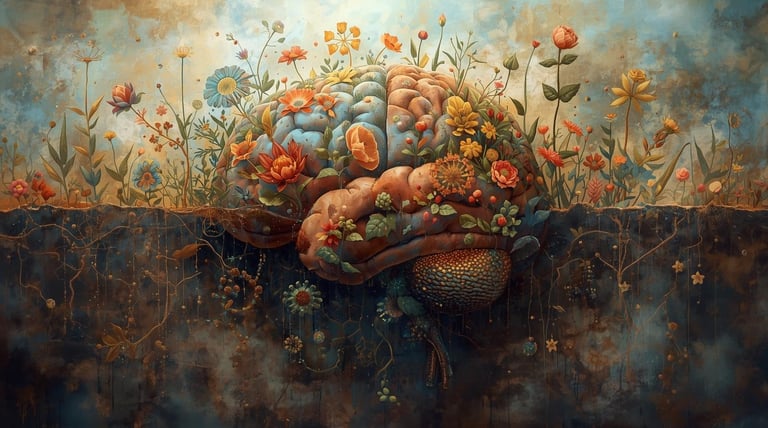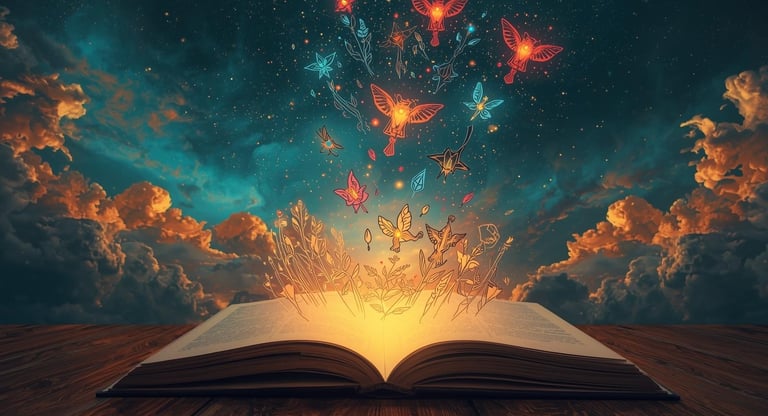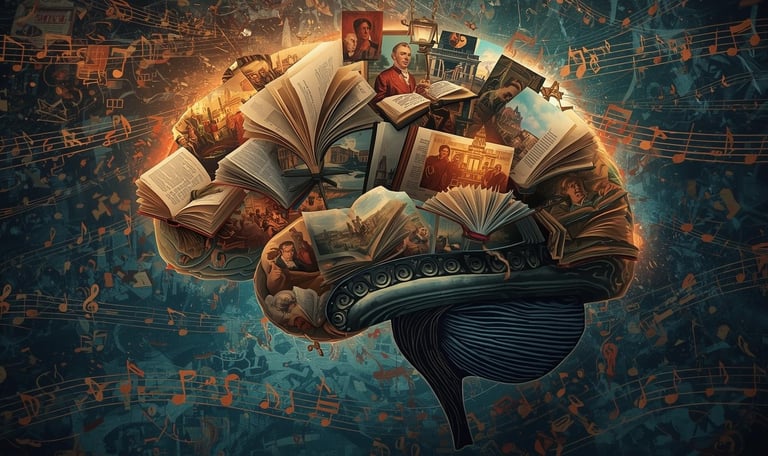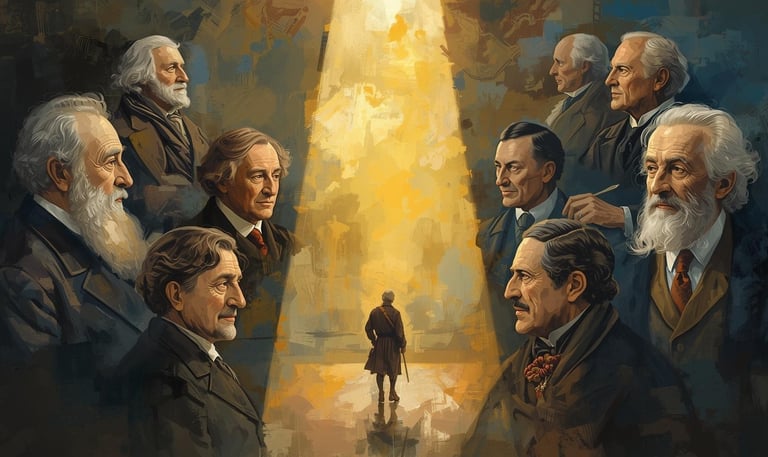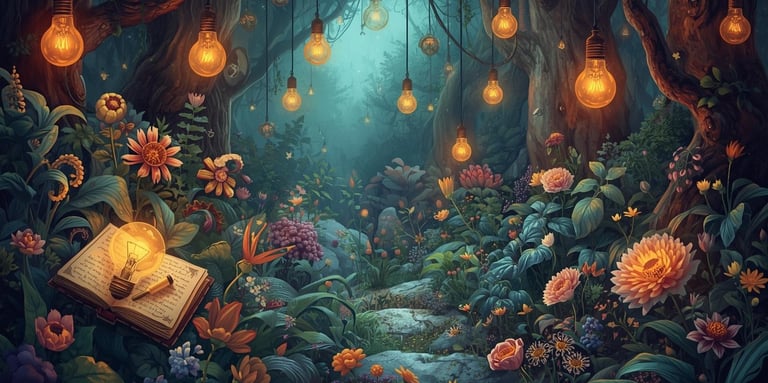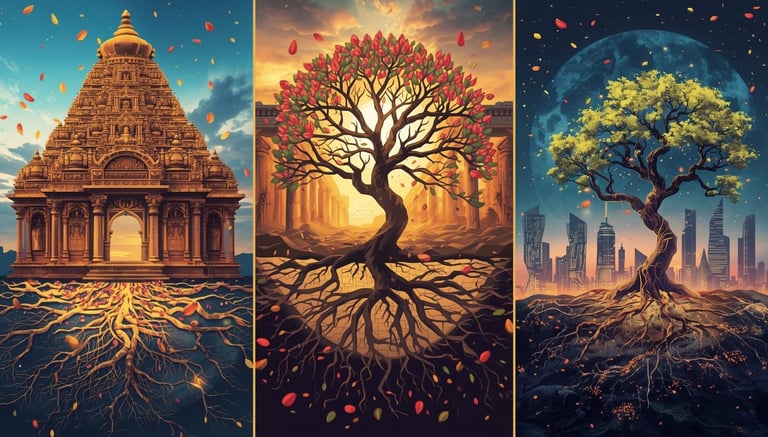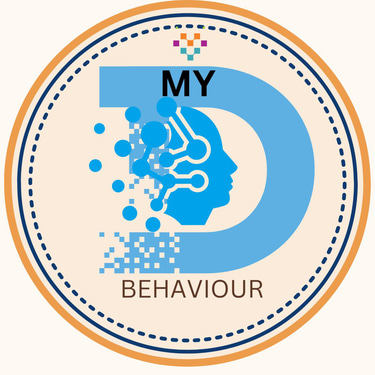The Seed of Creativity – Where Immortal Ideas Begin
“Unlock the secrets of the cognitive mind and discover how immortal creativity is born from simple sparks of thought.” Part 1
Gajanan L. Bhonde
9/26/202512 min read


Understanding Creativity Beyond Talent
The common perception of creativity often confines it to an innate talent possessed by a select few. However, this notion overlooks the broader understanding of creativity as a complex mental process that can be nurtured and developed by anyone. Creativity is not merely an equilibrium of genetic predispositions; it encompasses a set of cognitive skills, behaviors, and environmental factors that uniquely combine to foster innovative thinking.
Creativity manifests itself in various forms, from artistic endeavors to scientific breakthroughs, and should be viewed as a continuum rather than a fixed trait. By engaging in practices that stimulate creative thinking, individuals can significantly enhance their inventive capabilities. Techniques such as brainstorming, mind mapping, and lateral thinking nurture divergent thinking – an essential aspect of the creative process that encourages the exploration of multiple solutions rather than single, linear outcomes.
Moreover, adopting a growth mindset is crucial in one’s creative journey. This mindset reinforces the belief that abilities and intelligence can be developed through effort and learning. When individuals embrace challenges and view failures as opportunities for learning, they are more likely to unlock their creative potential. Taking inspiration from diverse fields, participating in workshops, or simply engaging in discussions can further enrich the creative experience. Such approaches demonstrate that creativity is not locked within the confines of talent but is accessible through sustained practice and openness to new ideas.
We must recognize that creativity exists within each individual, waiting to be harnessed. By shifting our perspective from talent-centric views to a broader understanding of creativity as a skill that can be developed, we empower everyone to explore and cultivate their unique creative abilities. By doing so, we create an inclusive environment that promotes innovation, problem-solving, and artistic expression across all spheres of life.
The Cognitive Mind as Fertile Soil
The comparison of the cognitive mind to fertile soil serves as a powerful analogy for understanding the processes that underlie creativity. Just as a garden requires rich soil to support growth, the brain necessitates a conducive environment for the cultivation of ideas and imagination. Neurological research has shown that specific areas of the brain, such as the default mode network (DMN), play a crucial role in fostering creativity. This network becomes particularly active during periods of daydreaming or mind-wandering, suggesting that the cognitive processes engaged during these times are essential for forming novel connections and generating creative insights.
Furthermore, psychological theories, such as the componential theory of creativity proposed by Mihaly Csikszentmihalyi, emphasize the interaction of individual attributes, domain-specific knowledge, and intrinsic motivation as key components that contribute to the creative process. This framework underscores the importance of nurturing a mental environment conducive to creativity by promoting exploration and experimentation. Engaging various cognitive strategies, such as lateral thinking and divergent thinking, helps to enrich the soil of the mind, allowing diverse ideas to sprout and flourish.
Moreover, studies indicate that emotional states also play a significant role in creative thinking. Positive emotions have been linked to increased flexibility in thought processes, which can enhance the ability to connect seemingly unrelated concepts. The interplay between cognitive and emotional factors creates a fertile ground for the germination of innovative thoughts.
In essence, creating a supportive mental environment is paramount for enabling the natural growth of creativity. By understanding how the cognitive mind functions and identifying ways to enrich this fertile soil, individuals can better cultivate their unique ideas and approaches, ultimately fostering a thriving landscape of creativity.
Everyday Examples of Immortal Creativity
The exploration of creativity can be significantly enriched by examining the achievements of notable figures such as Thomas Edison, Rabindranath Tagore, and Albert Einstein. Each of these individuals exhibited unique creative processes that yielded innovations which have had lasting impacts on their respective fields, demonstrating that the seed of creativity can bloom in various forms.
Thomas Edison, often called the "Wizard of Menlo Park," revolutionized the modern world with his inventions, notably the electric light bulb. Edison's creative process was characterized by relentless experimentation and a willingness to embrace failure. He famously tested over a thousand materials before finding the suitable filament for the bulb. This persistence exemplifies the notion that creativity often flourishes in the face of challenges, and his innovative spirit led to the establishment of electric power systems, fundamentally transforming society's way of life.
In the realm of literature and art, Rabindranath Tagore stands out as a paragon of creativity. He was the first non-European to receive the Nobel Prize in Literature, recognized for his profound work, "Gitanjali." Tagore's imaginative prowess was reflected in his ability to weave intricate themes of spirituality, nature, and human emotion into his poetry. His holistic approach to creativity encompassed music, dance, and visual arts, illustrating that diverse creative outlets can converge to produce immortal ideas. Tagore's vision encourages contemporary thinkers to explore interdisciplinary connections, fostering a broader understanding of creativity.
Albert Einstein, renowned for his contributions to physics, showcased creativity through theoretical innovation. His formulation of the theory of relativity fundamentally altered the perception of time and space. Einstein's approach blended analytical reasoning with imaginative thought experiments, allowing him to envision complex scientific concepts. His legacy underscores the importance of imaginative thinking in the scientific world and exemplifies how abstract ideas can lead to groundbreaking theories influencing modern technology.
By analyzing the creative processes of these iconic figures, one can appreciate the diverse pathways through which immortality in creativity can manifest. Their stories serve as a testament that everyone possesses the potential for creative expression in various domains. Embracing this potential can inspire new generations to explore their imaginative capacities and contribute their unique ideas.
The Interconnection of Memory, Imagination, and Divergent Thinking
The interplay between memory, imagination, and divergent thinking plays a crucial role in fostering creativity. Memory serves as the foundation upon which imaginative processes are built. The human brain relies on past experiences, knowledge, and skills stored in memory to construct new ideas. By recalling and reconstructing these memories, individuals can draw connections that fuel innovative thought. This process emphasizes how vital our recollection of past events is for shaping imaginative capabilities.
Imagination, in turn, acts as a bridge connecting stored memories to new possibilities. It allows individuals to visualize scenarios that transcend their immediate reality, leading to the conceptualization of unique ideas and solutions. Through imaginative exploration, individuals can manipulate and combine their memories in novel ways, leading to insights that may not have been otherwise attainable. This connection highlights the symbiotic relationship between memory and imagination in the creative process.
Divergent thinking emerges as a significant cognitive tool that enhances the relationship between memory and imagination. It is the ability to generate multiple solutions or ideas in response to an open-ended question or problem. This form of thinking encourages the brain to break free from traditional patterns, enabling individuals to explore a wider array of options. Divergent thinking complements the processes of memory retrieval and imaginative creation by promoting flexibility and originality in thought. Encouraging such thinking can yield creative breakthroughs, making it essential in various fields of work and study.
To cultivate these cognitive functions, individuals can engage in practices that stimulate both memory recall and imaginative thought. Techniques like brainstorming, journaling, and immersive experiences can enhance one's ability to connect memories with innovative ideas. Understanding the interconnectedness of memory, imagination, and divergent thinking is essential for those seeking to nurture their creative capabilities.
The Legacy of Creative Minds: Why We Remember Them
Throughout history, certain creative individuals have left indelible marks on society, shaping our thoughts, cultures, and practices in profound ways. These luminaries, be it in the realms of art, literature, science, or music, possess a unique legacy that persists long after their mortal existence has ended. One prominent reason that contributes to the enduring recognition of these figures is their substantial cultural impact. Their works often resonate with universal themes and emotions, bridging gaps across generations and societies, thereby solidifying their relevance over time.
Moreover, the personal resonance of their contributions plays a crucial role in maintaining their legacy. Creative minds have an extraordinary ability to tap into the collective consciousness of their audience. The feelings evoked by a painting, a literary piece, or a scientific theory resonate deeply within us, making their ideas relatable on an intimate level. This personal connection ensures that their work continues to inspire others, prompting new generations to revisit and appreciate their contributions. The most memorable personalities are often those who express the complexities of human existence in ways that deeply resonate with our own experiences.
Timelessness is another hallmark of creative individuals whose works remain in the public consciousness. Their ideas transcend the context in which they were created, appealing to fundamental truths about humanity or offering insight into the human condition. For instance, Shakespeare’s explorations of love, ambition, and power endure due to their universal applicability. Similarly, the breakthroughs of scientific innovators offer foundational principles that continuously fuel advancements in technology and understanding. By analyzing these characteristics, we can better appreciate the potential for our own creative expressions to achieve a legacy, encouraging us to create with the intention of leaving a lasting impact.
Conclusion: Your Mind as a Seed Bank of Immortality
Throughout this exploration of creativity, we have uncovered the transformative potential of ideas and the vital role our minds play as a reservoir of innovative thought. The metaphor of the mind as a 'seed bank' emphasizes that creativity is not merely the privilege of a select few but is an inherent capability within all individuals. Just as seeds hold the promise of future growth and abundance, so too do the ideas germinating in our consciousness possess the power to yield remarkable contributions to society.
It is essential to recognize that everyone possesses the ability to cultivate their creative potential. By fostering an environment that encourages exploration, experimentation, and risk-taking, we can unlock the dormant seeds of creativity within us. Engaging in diverse experiences, seeking inspiration from various sources, and embracing challenges can serve as catalysts for innovation. This collective journey of ideation can lead to the formulation of groundbreaking concepts and solutions that benefit not only the individual but also the broader community.
Practical strategies for nurturing creativity include establishing a daily creative practice, maintaining a journal for reflections and ideas, and collaborating with others who inspire and challenge our thinking. Furthermore, allowing ourselves the grace to fail and learn from those experiences can enrich our creative process. It is through these iterative cycles of growth, reflection, and transformation that we can develop our unique voice and contribute significantly to the tapestry of human knowledge.
In conclusion, by perceiving our thoughts as seeds awaiting cultivation, we can harness the collective potential of our minds to foster a rich and fruitful landscape of ideas. This mindset not only enhances our individual creativity but also contributes to a legacy of immortality through our shared contributions to the world.
HOW TO PRACTICE CREATIVITY.
The Seed of Creativity – Where Immortal Ideas Begin
(Series: Creativity – Great Things Always Immortal: The Role of the Cognitive Mind)
🌱 Introduction: Why Do Some Ideas Outlive Time?
Every era gives birth to thinkers, dreamers, artists, and innovators who leave behind more than inventions, words, or paintings. They leave immortality. Their work transcends their own lifespan, moving through generations like an eternal flame. Why does this happen? Why do some ideas fade into dust, while others live forever in the collective memory of humankind?
The answer lies in the cognitive mind – the complex orchestra of imagination, memory, emotion, and reasoning that powers creativity. Immortal ideas do not appear magically; they begin as fragile sparks in the human mind. When nurtured, they grow into timeless creations.
This blog explores the seed stage of creativity: how immortal ideas are born in the mind, what role cognition plays, and how ordinary people can cultivate seeds that may one day inspire the world.
🧠 1. Creativity Is More Than Talent
Most people mistakenly believe creativity belongs only to the gifted few – the geniuses, the prodigies, the ones “born with it.” But neuroscience reveals something powerful: every human mind has the potential for creativity.
Cognitive scientists describe creativity as a combination of divergent thinking (generating multiple ideas) and convergent thinking (selecting the best one).
Talent alone does not guarantee immortality. Countless skilled individuals lived and died unnoticed. What made some immortal was how they used their cognitive processes to transform simple ideas into lasting ones.
Example:
Thomas Edison once said, “Genius is one percent inspiration and ninety-nine percent perspiration.” His lightbulb was not just an invention of talent but the result of thousands of cognitive experiments, failures, and refinements.
👉 Lesson: Creativity is not luck. It is mental practice cultivated like a seed.
🌌 2. The First Spark: Where Ideas Are Born
Every immortal creation starts with a moment – a spark of insight. Psychologists call this the “Aha! moment.”
The brain’s default mode network (DMN) activates when we daydream, rest, or let our minds wander.
In this relaxed state, the mind connects distant thoughts, forming new patterns.
These sudden connections often feel like flashes of inspiration – the seed of creativity.
Historical Examples of Sparks:
Archimedes shouting “Eureka!” in his bath.
Rabindranath Tagore writing verses while walking under trees.
Einstein imagining riding a beam of light, which led to relativity theory.
All these sparks began not in laboratories or studios but in the quiet space of cognition.
👉 Lesson: Immortal ideas are born when the mind is free enough to wander.
🌍 3. Culture + Cognition = Immortality
A seed cannot grow in barren soil. Similarly, an idea becomes immortal only when it finds fertile ground in society.
Cognitive mind produces the seed.
Culture and environment provide the soil and water.
For example:
Shakespeare’s plays became immortal not just because of his genius but because Elizabethan England loved theatre.
Kalidasa’s poetry lived for centuries because ancient Indian society valued oral storytelling.
Without the right cultural soil, even the greatest seeds may remain buried.
👉 Lesson: To make your creativity immortal, align it with human needs and emotions.
🔬 4. Science of Memory: Why We Remember Some Ideas Forever
The human brain does not remember everything. We forget most of our daily experiences. Yet, certain ideas live for centuries. Why?
Emotional Encoding: Strong emotions make memories stick. Works that move people emotionally (love, sorrow, hope) are remembered longer.
Simplicity + Symbolism: The mind remembers stories, images, and metaphors better than dry facts.
Repetition & Transmission: When society repeats an idea (songs sung, stories retold, inventions reused), it enters collective memory.
Example:
Gandhi’s spinning wheel was not just a tool – it became a symbol of freedom.
The Mona Lisa is remembered not only for technique but because her mysterious smile triggers endless curiosity.
👉 Lesson: Immortal creativity speaks directly to memory and emotion.
🌱 5. The Inner Garden: Nurturing Your Creative Seeds
If the seed of creativity begins in the cognitive mind, how can we nurture it into immortality?
a. Observation
Immortal creators are sharp observers. They notice what others ignore.
Leonardo da Vinci filled notebooks with sketches of birds, muscles, and machines.
b. Reflection
Time to think deeply, not just do.
Einstein spent hours “wasting time” in thought experiments.
c. Connection
Linking unrelated ideas.
Steve Jobs combined technology with design, creating Apple’s immortal products.
d. Documentation
Recording ideas before they fade.
Writers keep journals, inventors sketch prototypes, artists scribble drafts.
👉 Lesson: Treat your cognitive mind like a garden. Water it with curiosity, patience, and practice.
🌟 6. Everyday People, Immortal Impact
Immortality is not reserved for global legends. Ordinary people plant immortal seeds too:
A grandmother’s recipe passed down for generations.
A teacher’s lesson remembered by thousands of students.
A local artist’s mural that becomes a city landmark.
These may not be recorded in history books, but they are immortal in collective memory.
👉 Lesson: You don’t need to be famous to create immortality. You just need to impact lives with creativity.
💡 7. The Fear of Rejection: Why Seeds Often Stay Hidden
Many people never nurture their seeds because of fear:
“What if people laugh at me?”
“What if I fail?”
“What if it’s not good enough?”
Yet, history shows that most immortal ideas were rejected at first:
Van Gogh sold only one painting in his lifetime.
J.K. Rowling’s Harry Potter was rejected by 12 publishers.
Galileo was punished for his heliocentric view.
Their cognitive minds didn’t stop nurturing seeds, even when the world denied them.
👉 Lesson: Rejection is not death. It is often the first sign of immortality.
🔑 8. How to Plant Your Immortal Seed Today
Practical exercises to begin your journey:
Daily Idea Journal – Write 10 ideas every day. Don’t judge them. Seeds first look small.
Mind-Mapping Sessions – Take one idea, branch it into connections. See where it leads.
Quiet Time – Give your brain rest. The subconscious will work silently.
Creative Conversations – Share your thoughts with others. New soil, new water.
Symbolic Thinking – Express ideas in metaphors, stories, or art. Symbols live longer than words.
✨ Conclusion: Your Mind Is a Seed Bank of Immortality
Creativity is not a gift given to a chosen few. It is the natural power of the cognitive mind. Every thought you have is a seed. Most will wither. Some will sprout. A few may grow into immortal trees of knowledge, art, or innovation that generations will sit under for shade and inspiration.
The question is not whether you are creative. The real question is:
👉 Are you nurturing the seeds your mind already holds?
Because great things, once created, are always immortal.
